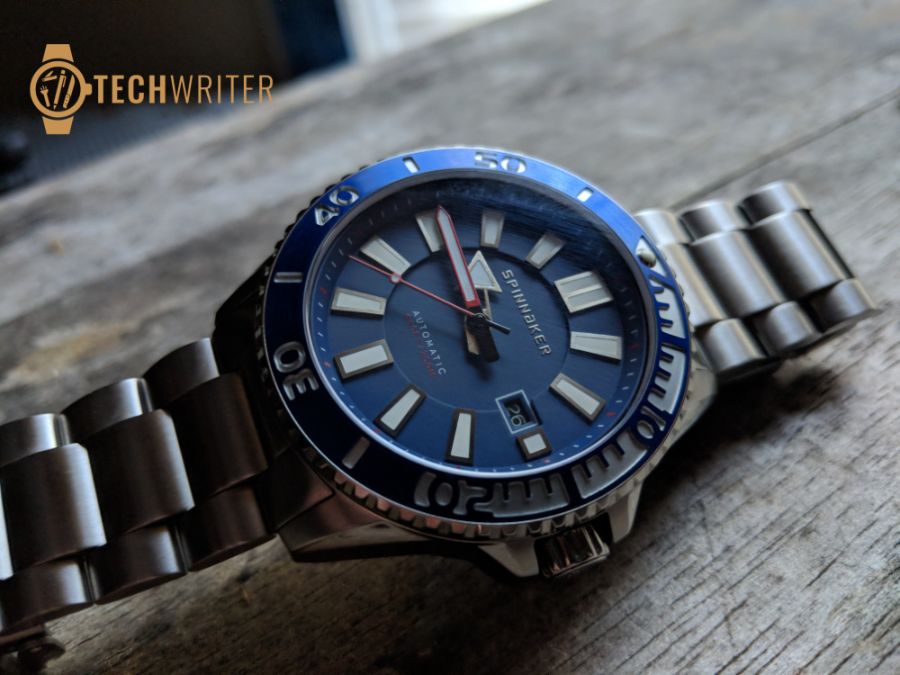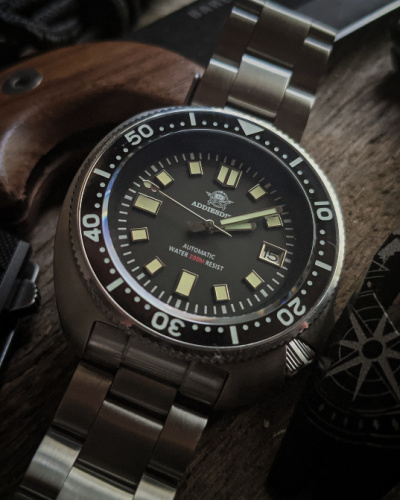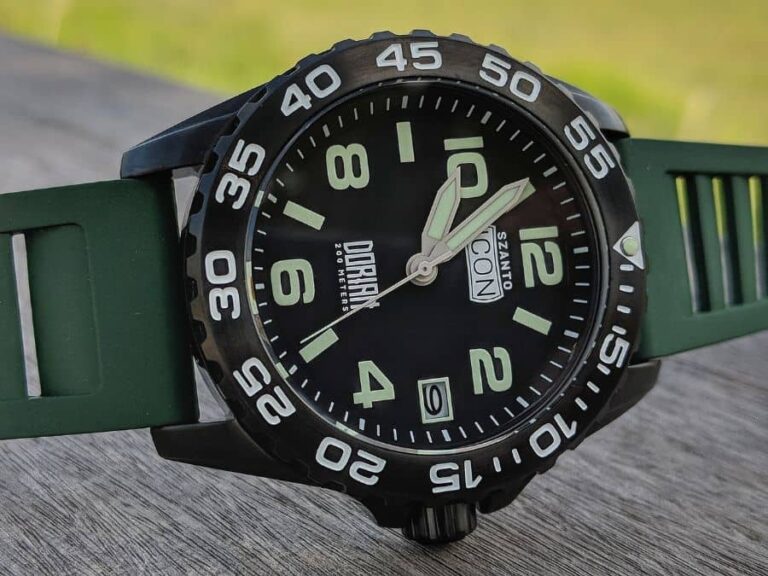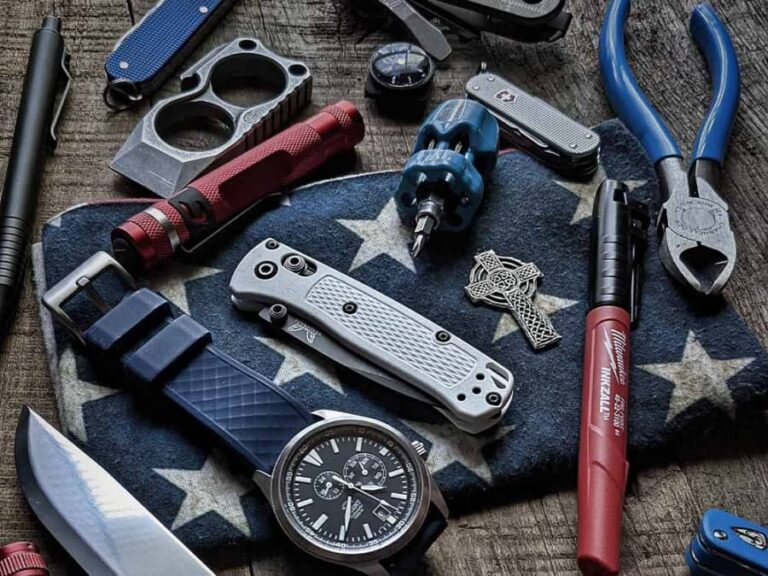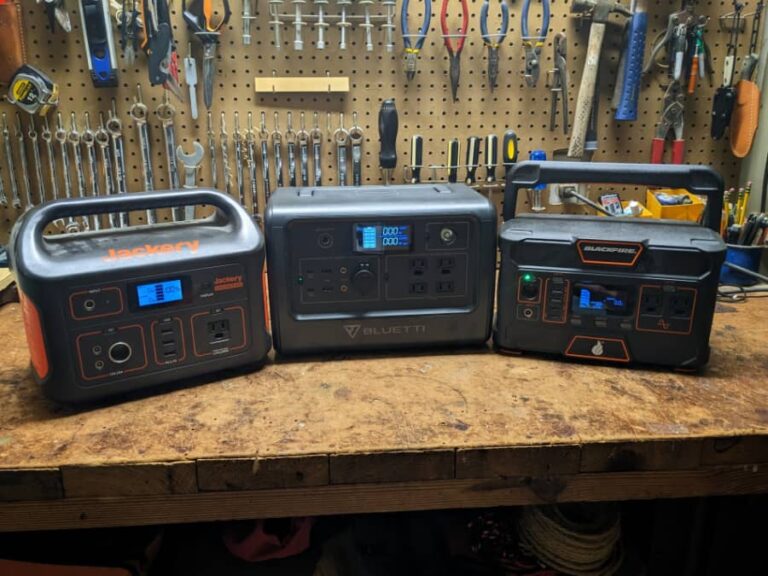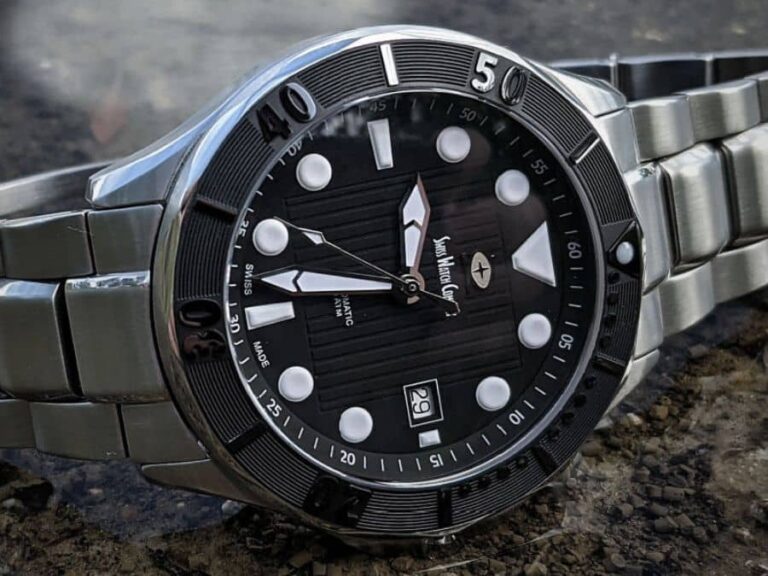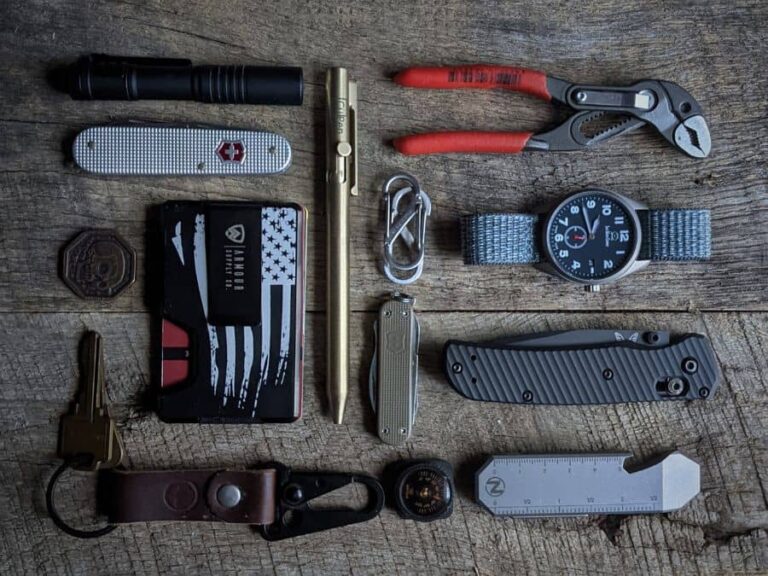How To Use A Dive Watch – Basic Rotating Bezel Functions
An Easy Guide On How A Dive Watch Bezel Works
We review a lot of dive watches. Usually, we describe a watch’s appearance, construction, durability, and performance. However, this time, we’d like to discuss function over form. More specifically, we want to talk about the practical function of a dive watch.
For those of you who are certified scuba divers, much of the following will be old hat. However, we are also going to discuss a little history surrounding the dive watch. Moreover, we will be offering suggestions for non-diving uses, made possible by your watch’s bezel ring.
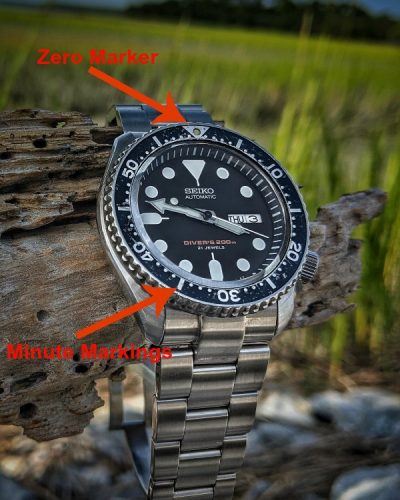
What is a Diving Watch Bezel?
The English word bezel comes to us from the French word biseau, which means “sloping edge” or “bias.” For watchmakers, bezel refers to the groove and flange that hold the crystal in place. It also refers to a similar groove and flange that hold the bezel ring in place.
The bezel ring usually has marks indicating minutes. Most of the time, the zero on the bezel ring should be aligned with the 12 o’clock position on the dial.
A bezel ring should only turn in the counterclockwise direction. This is actually a safety measure to ensure that the bezel ring doesn’t turn clockwise during the dive, and thereby indicate that a diver has more time remaining, without incurring an obligation to decompress. If the bezel ring accidently turns counterclockwise, there is no harm done, other than shortening the dive.
Soldiers, Boy Scouts, and others who engage in land-navigation will note that many compasses also have bezel rings. These have index marks that are aligned with the north-pointing needle when moving.
How To Track Time With A Dive Watch
There are two ways to tack your dive time with a standard unidirectional diving bezel.
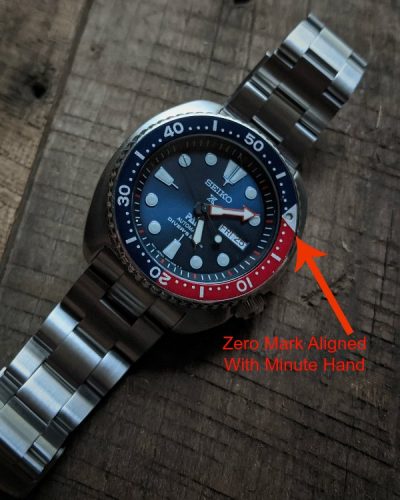
Tracking Elapsed Time With A Dive Watch
This is the easiest way to use a diving bezel and is the most straight forward. Turn the bezel “Zero” marker (which may be a triangle or hash marking) to the minute hand. As the minute hand progresses around the watch face, you are tracking elapsed time.
For example, if you want to time 35 minutes, rotate the bezel until the Zero marker is at the minute hand. When the minute hand reaches the 35 on the bezel ring, 35 minutes have passed. That’s very easy to understand.
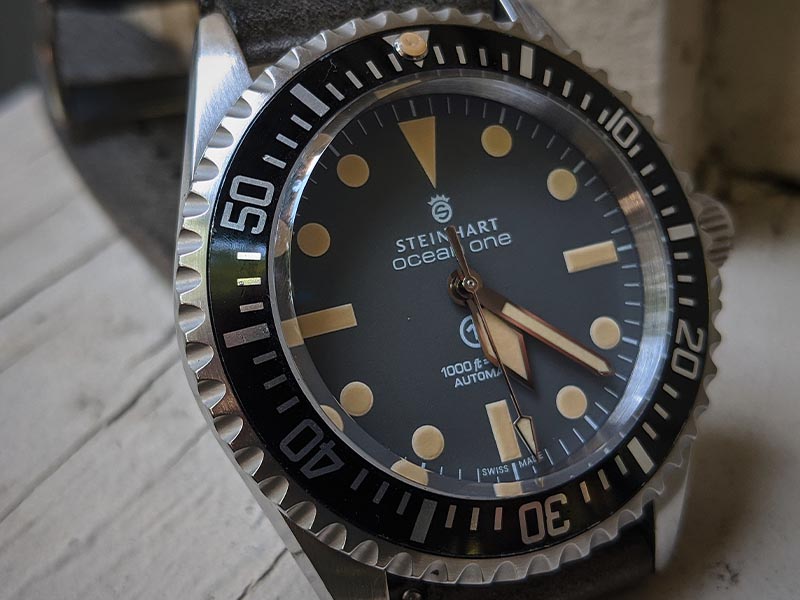
Tracking Remaining Time With A Dive Watch
This calculation takes a little more know how, but only basic math is needed to calculate correctly. In this case, let’s say you want to track 35 minutes again. You subtract 35 – 60 which equals 25. Turn your bezel ring so the minute hand aligns with the 25 marker. As the minute hand travels, it will count down 35 minutes as it moves towards the Zero Marker. Once the minute hand reaches the Zero, the time is up.
Dive watches are also used for keeping track of surface intervals between dives, and for noting travel time between dive sites.
Check Out This Great Video For A Visual Explanation On How To Use A Dive Watch
Dive Watches and Dive Tables
As prologue, it should be noted that very few scuba certification agencies still teach divers how to use dive tables. This is due to the significant increase in safety offered by modern dive computers. The agencies that still teach tables do so for two reasons. First, tables help new divers to appreciate just how much nitrogen can build up in the human body. Second, if a diver’s computer fails, he can undertake more dives in that day, by switching to tables. A diver cannot, however, start with tables and then safely move to a computer later in the day.
As mentioned previously, dive tables are used to avoid the buildup of excess nitrogen. Let’s say that a diver wishes to make his first dive of the day to a depth of 70 feet (21 meters). In accordance with a widely used recreational dive table, the maximum amount of time that he could stay at that depth is 45 minutes. Without going into too much detail, there are other limiting factors involved with dive tables.
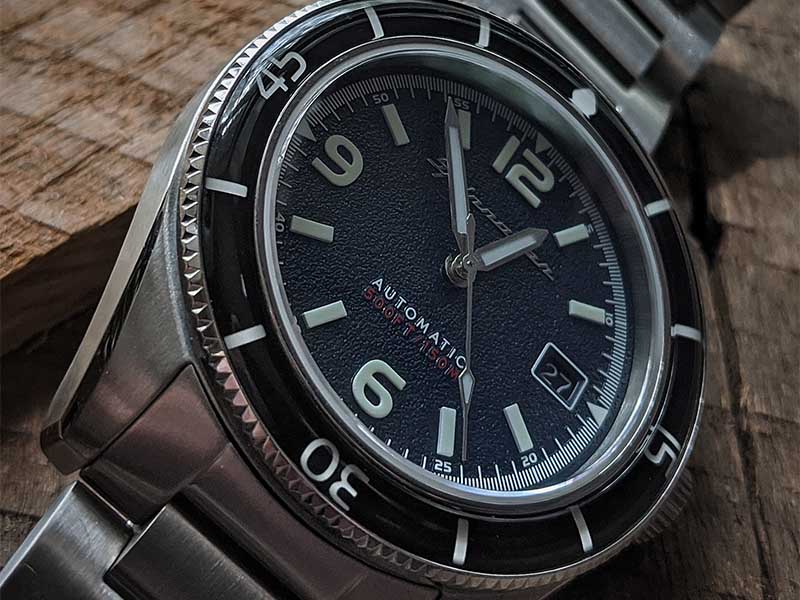
Other Subaquatic Uses for Dive Watches
Assuming that a diver has another means to keep track of bottom time, a dive watch can be used for other applications.
First, a watch can aid in underwater navigation. For example, a diver might know that it takes five minutes to swim from one underwater landmark to another, following a known azimuth.
Second, a watch can aid in underwater searches. A diver can swim out and back from a specific point, for a set number of minutes while looking for a lost object. There are better techniques for underwater searches, but this is an acceptable method.
Third, a watch can be used in the event that a diver loses sight of his or her buddy. Before a dive, buddies should establish a maximum amount of time to be expended in looking for one another before returning to the surface. Once on the surface, it is easier to find one’s buddy. With a dive watch, a diver can set the bezel ring for a time of five minutes, and then not have to use his or her computer as a reference.
There are many situations in which a bezel ring can be useful.
Budding breath-hold divers can use the bezel ring as an aid in apnea training on the surface. This builds up lung capacity for actual diving.
Pilots and cross-country race car drivers can use the bezel ring to establish travel time between waypoints.
Military personnel often use bezel rings. In lieu of a stop-watch, a watch with a bezel ring can be used to time the duration of physical fitness events. For example, if a soldier must run two miles in 14 minutes in order to pass the physical fitness test, he can set the bezel ring to keep track of that goal. During land-navigation, a watch with a bezel ring can complement the use of a map, compass, and pace-count beads.
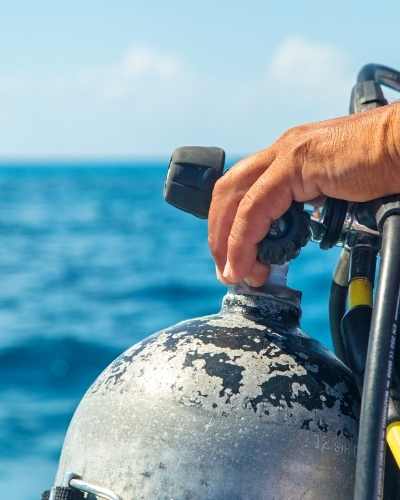
A Bit of History Of Dive Watch History
French naval officer and ocean explorer, Jacques-Yves Cousteau is usually credited with the invention of the Aqua-Lung, the first open-circuit scuba regulator. However, his collaborator, fellow Frenchman, Emile Gagnon deserves much of the credit. Cousteau and Gagnon adapted Gagnon’s gas demand-valve (regulator), from its application with internal combustion engines, to use on high-pressure air cylinders. Prior to 1943, divers had relied on either surface-supplied air, or the rebreather system. This new type of diving equipment allowed divers much more freedom of movement.
The problem with diving is that a person must be aware of one’s depth and bottom time in order to avoid excessive nitrogen buildup in the body. This, combined with a too-rapid ascent can result in a case of decompression sickness, also known as “the bends.”
Certified scuba divers are aware that even with modern equipment and standards, the chance of suffering decompression sickness can never be completely eliminated. But, it can be minimized through the use of dive tables.
By the time that the Aqua-Lung came along, the U.S. Navy had already developed dive tables to allow surface-supplied divers to plan and conduct safe dives. Recreational scuba divers continued to use the U.S. Navy dive tables until the 1960s when certification agencies began to create their own dive tables, with more conservative parameters.
To stay within the guidelines of a set of dive tables, one needs to carry a depth gauge and a bottom timer, or dive watch.
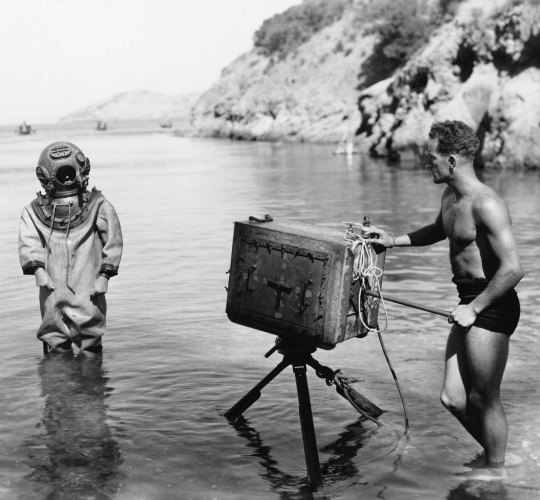
The bottom timer was the predecessor of the dive watch. You can think of a bottom timer as a sort of “stop watch” that is activated at depths below 5 feet (1.5 meters). Many enthusiasts of vintage scuba equipment still use them. Also, some modern dive computers have a bottom timer function used by technical divers. Bottom timers were clunky, and only good for diving, which is why they gave way to the dive watch.
American sporting goods stores began importing scuba units in 1948. However, it wasn’t until the late 1950s that Americans became generally aware of the sport, thanks to the popular TV shows, Sea Hunt and The Aquanauts. With the rising popularity of scuba diving, watch manufacturers saw an opportunity to tap into a brand new market.
The commercially produced dive watch predates the scuba unit by eleven years. Omega was first out of the box in 1932. These were primarily used by surface-supplied “hard-hat” divers, rebreather divers, and skin-divers (now called free-divers). Blancpain was the first to produce a dive watch with a rotating bezel ring.
Summing Up
Whether you are a non-diver, or someone who learned to dive in the age of the dive computer, we hope that you have gained a new appreciation for the venerable old bezel ring. It really does add practical function to the beauty of form.

Blair Witkowski is an avid watch nut, loves pocket knives and flashlights, and when he is not trying to be a good dad to his nine kids, you will find him running or posting pics on Instagram. Besides writing articles for Tech Writer EDC he is also the founder of Lowcountry Style & Living. In addition to writing, he is focused on improving his client’s websites for his other passion, Search Engine Optimization. His wife Jennifer and he live in coastal South Carolina.

